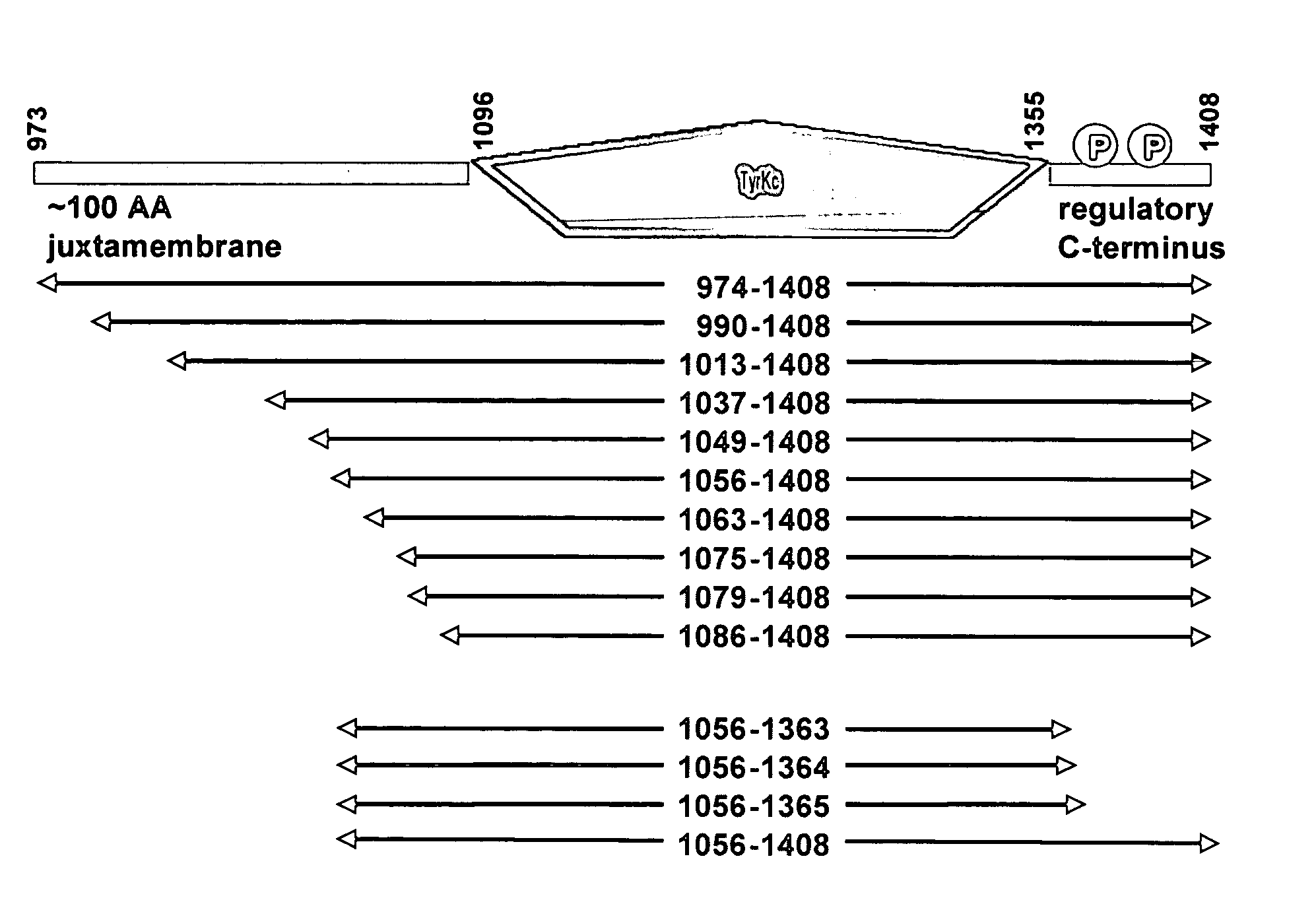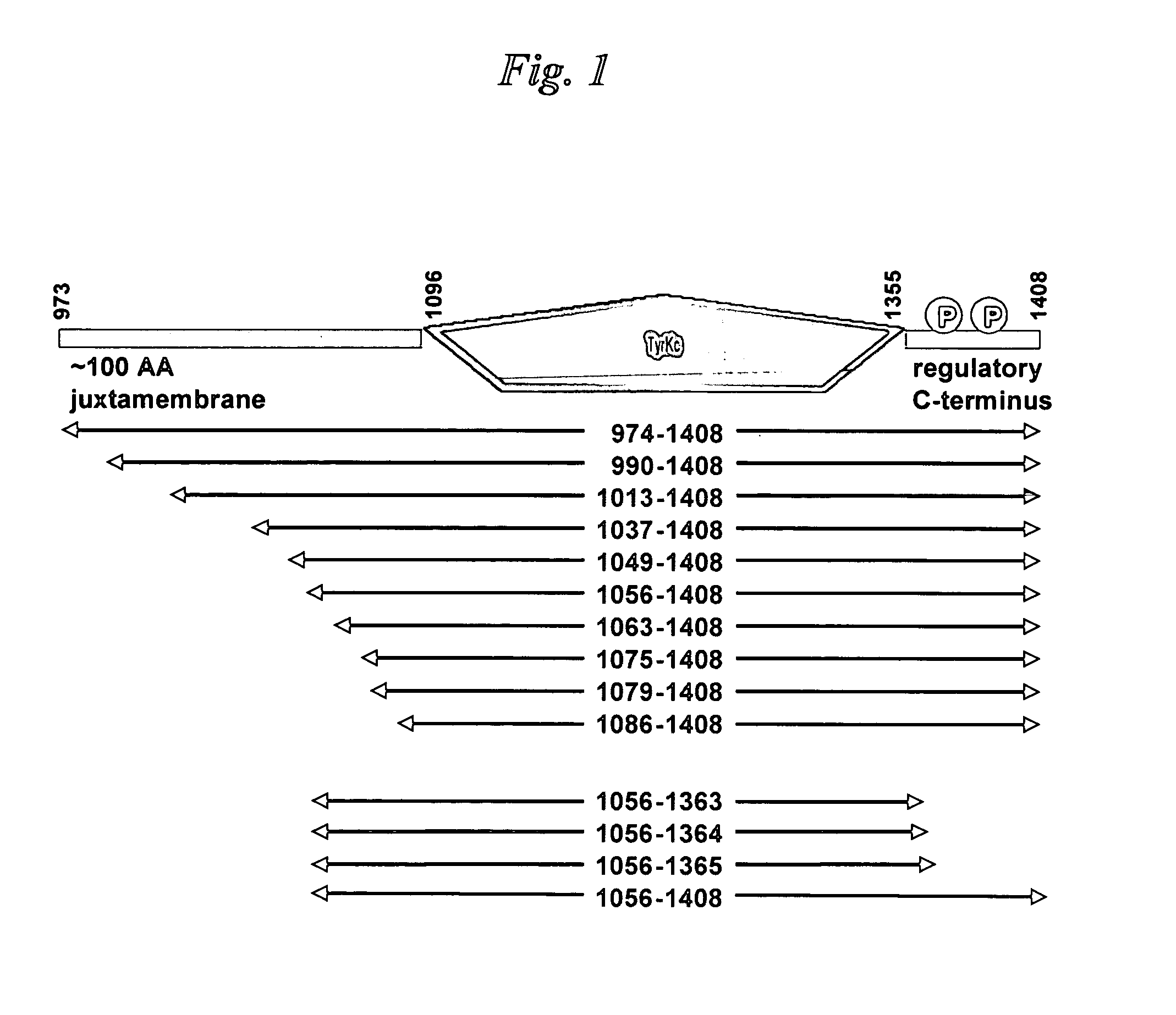Enzyme expression methods
a technology of enzymes and enzyme fragments, applied in the field of enzyme expression methods, can solve the problems of difficult crystallization, interference with normal activity and/or normal structure, etc., and achieve the effects of improving the crystallization of polypeptides, reducing the level of or eliminating modification, and enhancing the homogeneity of purified polypeptides
- Summary
- Abstract
- Description
- Claims
- Application Information
AI Technical Summary
Benefits of technology
Problems solved by technology
Method used
Image
Examples
example 1
Engineering a Bicistronic Vector Encoding Both Abl Kinase Domain and PTP1b Phosphatase Domain
[0098] The bicistronic vector engineering used, as a starting material, a previously-engineered vector that encodes human Abl (Abelson tyrosine kinase) kinase domain extending from Abl residue Gly 227 through to residue Val 515, termed pET-SPEC BI-PTP Abl G227-V515-X. The section of this plasmid that encodes Abl kinase and PTP1b domains on a bicistronic mRNA transcript is shown in Table 2. The remainder of the vector is a derivative of the pET-24 vector (Novagen) designed to utilize the T7 RNA polymerase for producing mRNA in strains of E. coli that are engineered to produce that polymerase.
[0099] A DNA fragment encoding the human PTP1b phosphatase domain extending from PTP1b residue Met 1 through to residue Gly 283 was engineered using PCR. The template for the PCR reaction was a previously-engineered human PTP1b cDNA derived from a purchased total human brain cDNA library (Invitrogen). C...
example 2
Expression in E. coli of His-tagged Abl Protein from pET-SPEC BI-PTP Abl G227-V515-X
[0102] To obtain protein expression of dephosphorylated Abl, the pET-SPEC BI-PTP Abl G227-V515-X DNA was transfected into the E. coli strain BL21 -CodonPlus(DE3)-RIL (Stratagene) using standard methods, with dual antibiotic selection of kanamycin and chloramphenicol. E. coli harboring the plasmid were grown in liquid culture at 37° C. with shaking to an OD600=1, at which point the culture temperature was reduced to 15° C., and the 0.5 mM IPTG inducing agent was added. The culture was then shaken for 18 hrs at 15° C., at which point the E. coli was concentrated by centrifugation.
[0103] The E. coli pellet, 0.5 g, was suspended in 10 ml buffer (50 mM Tris pH 7.5, 250 mM NaCl, 0.1 % Triton-X-100, 0.02% monothioglycerol, 20 uM phenylmethylsulfonyl chloride). Extraction was initiated by addition of lysozyme (Sigma) to 200 ug per ml, incubation on ice for 15 min, and sonication for 1 min. Solution was ce...
example 3
Determination that Abl Co-Expressed with Phosphatase is Not Phosphorylated
[0105] Abl proteins expressed either with or without PTP coexpression were evaluated for state of phosphorylation detectable with an antibody that specifically binds phospho-Tyr (PY20 mouse monoclonal IgG2b, SantaCruz Biotechnology). Samples of Abl made from each expression vector were separated by size using SDS-PAGE, then transferred by electro-blotting onto Imobilon-P membrane (Millipore) in transfer buffer (39 mM Glycine, 48 mM Tris HCl, 20% MeOH, 0.0375% SDS). The membrane was stained with coomassie to visualize the Abl proteins. Before exposure to antiserum the membrane was exposed to phosphate-buffered saline containing 0.1% Tween detergent and 5% bovine serum albumin to reduce background antibody binding. The paper was then exposed for 2 hr at room temperature to 1:1000 dilution of PY20 antibody prepared in the same buffer. After washing, membrane was exposed for 2 hr at room temperature to 1:5000 di...
PUM
| Property | Measurement | Unit |
|---|---|---|
| Length | aaaaa | aaaaa |
| Ratio | aaaaa | aaaaa |
| Sensitivity | aaaaa | aaaaa |
Abstract
Description
Claims
Application Information
 Login to View More
Login to View More - R&D
- Intellectual Property
- Life Sciences
- Materials
- Tech Scout
- Unparalleled Data Quality
- Higher Quality Content
- 60% Fewer Hallucinations
Browse by: Latest US Patents, China's latest patents, Technical Efficacy Thesaurus, Application Domain, Technology Topic, Popular Technical Reports.
© 2025 PatSnap. All rights reserved.Legal|Privacy policy|Modern Slavery Act Transparency Statement|Sitemap|About US| Contact US: help@patsnap.com


